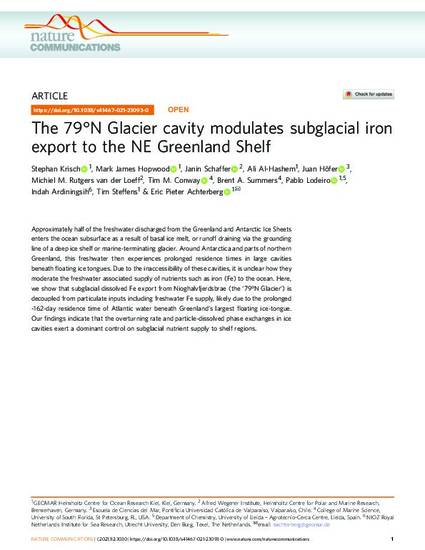
- Element cycles,
- Limnology,
- Marine chemistry
Approximately half of the freshwater discharged from the Greenland and Antarctic Ice Sheets enters the ocean subsurface as a result of basal ice melt, or runoff draining via the grounding line of a deep ice shelf or marine-terminating glacier. Around Antarctica and parts of northern Greenland, this freshwater then experiences prolonged residence times in large cavities beneath floating ice tongues. Due to the inaccessibility of these cavities, it is unclear how they moderate the freshwater associated supply of nutrients such as iron (Fe) to the ocean. Here, we show that subglacial dissolved Fe export from Nioghalvfjerdsbrae (the ‘79°N Glacier’) is decoupled from particulate inputs including freshwater Fe supply, likely due to the prolonged ~162-day residence time of Atlantic water beneath Greenland’s largest floating ice-tongue. Our findings indicate that the overturning rate and particle-dissolved phase exchanges in ice cavities exert a dominant control on subglacial nutrient supply to shelf regions. A large fraction of ice sheet discharge enters the ocean subsurface from underneath large floating ice-tongues. Here the authors show that associated nutrient export may be governed by shelf circulation and, especially for Fe, particle-dissolved phase exchanges, which is largely independent from freshwater Fe content.
Nature Communications, v. 12, art. 3030
Available at: http://works.bepress.com/tim-conway/32/
